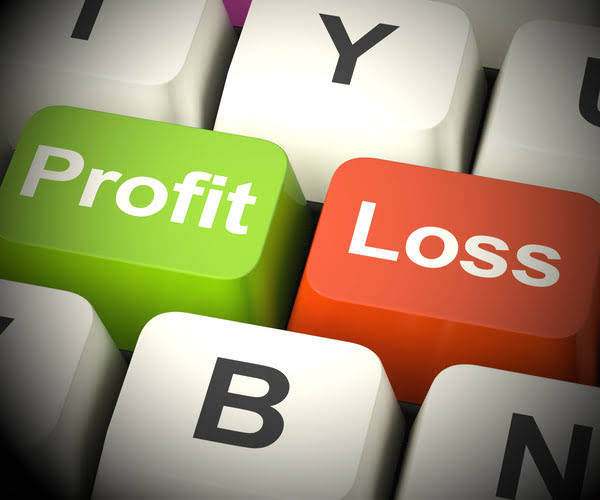Statement of Stockholders Equity Financial Accounting

Initially, at a corporation’s foundation, the amount of stockholders’ equity reflects how much co-owners or investors have contributed to the company in form of direct investments. The capital invested enables a company to operate as it acquires assets, hires personnel, and creates operations to market, produce, and distribute its products or services. Investors hope their equity contributions can be paid back to them through dividends and/or increase in shareholder value. Company or shareholders’ equity often provides analysts and investors with a general idea of the company’s financial health and well-being. Many investors view companies with negative shareholder equity as risky or unsafe investments.
- After almost a decade of experience in public accounting, he created MyAccountingCourse.com to help people learn accounting & finance, pass the CPA exam, and start their career.
- Shaun Conrad is a Certified Public Accountant and CPA exam expert with a passion for teaching.
- Common shares represent residual ownership in a company and in the event of liquidation or dividend payments, common shares can only receive payments after preferred shareholders have been paid first.
- It is reflected on the balance sheet as the total amount of equity over the par value of the stock.
- Although it’s found easily enough by looking at a balance sheet, the statement of stockholders’ equity is often overlooked in favor of metrics such as cash flow, net profit, and net loss.
Who uses a statement of shareholder equity?
Get instant access to lessons taught by experienced private equity pros and bulge bracket investment bankers including financial statement modeling, DCF, M&A, LBO, Comps and Excel Modeling. If a small business owner is only concerned with money coming in and going out, they may overlook the statement of stockholders’ equity. However, if you want a good idea of how your operations are doing, income should not be your only focus. Shareholder equity influences the return generated concerning the total amount invested by equity investors. Shareholder equity is not a perfect predictor of a company’s financial health. However, when used in conjunction with other tools and metrics, the investor can accurately assess an organization’s health.
- Looking at the same period one year earlier, we can see that the year-over-year (YOY) change in equity was an increase of $9.5 billion.
- For example, if a company made $100 million in annual profits, but only paid out $10 million to shareholders, its retained earnings would be $90 million.
- Hence, these amounts will appear in parentheses to indicate that they had a negative effect on the cash balance.
- Because in the event of insolvency, the amount salvaged by shareholders is derived from the remaining assets, which is essentially the stockholders’ equity.
- It represents the total amount of stock the company has issued to public investors, company officers, and company insiders, including restricted shares.
Paid-In Capital
The retained earnings are used primarily for the expenses of doing business and for the expansion of the business. This is the percentage of net earnings that is not paid to shareholders as dividends. Long-term assets are possessions that cannot reliably be converted to cash or consumed within a year.
Applications in Financial Modeling

A company’s negative equity that remains prolonged can amount to balance sheet insolvency. Market analysts and investors prefer a balance between the amount of retained earnings that a company pays out to investors in the form of dividends and the amount retained to reinvest into the company. If the company ever needs to be liquidated, SE is the amount of money that would be returned to these owners after all other debts are satisfied. Retained earnings are part of shareholder equity as is any capital invested in the company.
A statement of shareholders’ equity is a simple calculation obtained from a company’s balance sheet. It basically summarizes the ownership of a company and can be used to quickly determine the difference between assets and liabilities. Read on to find out why this statement is important, its components, and how it’s calculated, and to check out an example of one. The statement of shareholders’ equity gives investors a much better understanding of how the individual equity accounts have changed during the period.

The account demonstrates what the company did with its capital investments and profits earned during the period. Except, we see paid-in capital in excess of par actually increased a bit in 2019 as a result of issuance of new shares. In Note 6 to the financial statements on page 56, we see there were in statement of stockholders equity fact four million shares (rounded) issued to employees as part of their non-cash compensation. A $0.05 par value would be $200,000, well below the rounding limit on these financials. In any case, the increase to owners’ equity as a result of additional paid-in capital during 2019 was $11.001 million.
Module 13: Accounting for Corporations
All of our content is based on objective analysis, and the opinions are our own. Note that near the bottom of the SCF there is a reconciliation of the cash and cash equivalents between the beginning and the end of the year. To see a more comprehensive example, we suggest an Internet search for a publicly-traded corporation’s Form 10-K. Long-term liabilities are obligations that are due for repayment over periods longer than one year. Companies may have bonds payable, leases, and pension obligations under this category.

Everything You Need to Know About the Statement of Shareholder Equity
Many of the other adjustments in the operating activities section of the SCF reflect the changes in the balances of the current assets and current liabilities. For example, if accounts receivable decreased by $5,000, the corporation must have collected more than the current period’s credit sales that were included in the income statement. https://www.bookstime.com/ Since the decrease in the balance of accounts receivable is favorable for the corporation’s cash balance, the $5,000 decrease in receivables will be a positive amount on the SCF. The statement of cash flows (SCF) or cash flow statement reports a corporation’s significant cash inflows and outflows that occurred during an accounting period.
What Is a Company’s Equity?
From the beginning balance, we’ll add the net income of $40,000 for the current period, and then subtract the $2,500 in dividends distributed to common shareholders. Equity, in the simplest terms, is the money shareholders have invested in the business. It constitutes a part of the total capital invested in the business, which doesn’t belong to debt holders. For example, if a company does not have any non-equity assets, they are not required to list them on their balance sheet. For example, if a company made $100 million in annual profits, but only paid out $10 million to shareholders, its retained earnings would be $90 million. Retained earnings are the profits that a company has earned and reinvested in itself instead of distributing it to shareholders.

